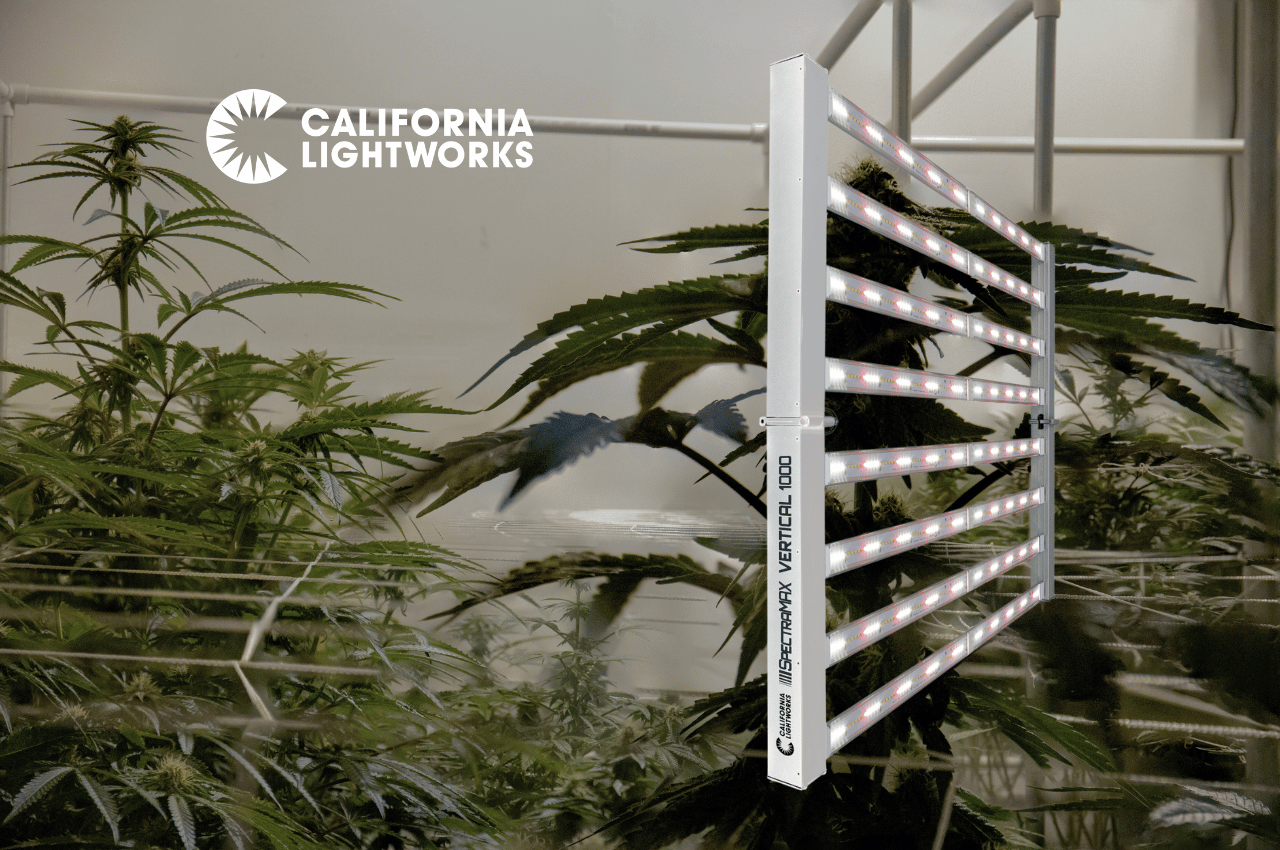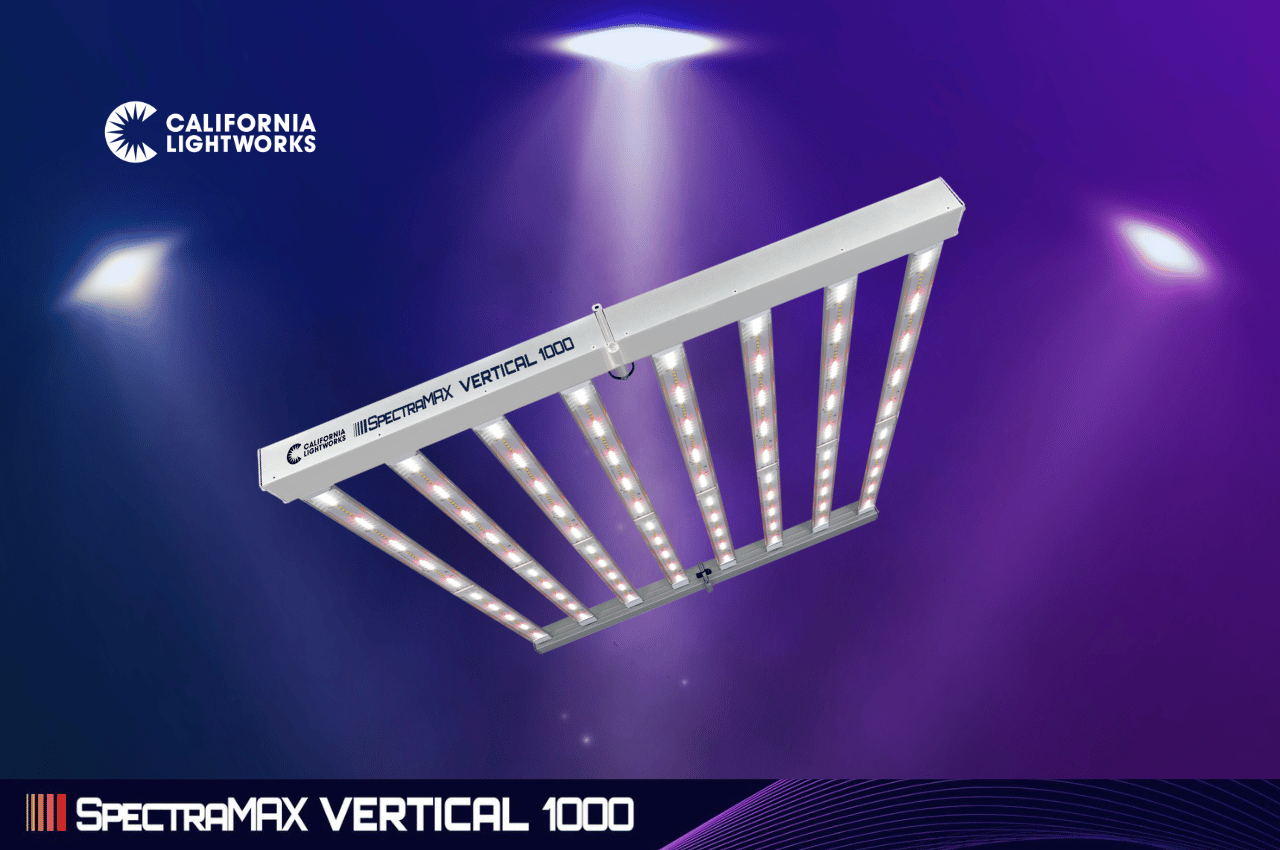You’ve done your research on color spectrum for plant cultivation. You know blue light is essential for growth and development. You know red light promotes flowering. You know LED grow lights are most efficient. Now as you look at your options, you wonder: “Can I just use blue and red LED lights? Do I need all this extra research.”
The short answer: No, you can’t, and yes, you do. While the color spectrum is essential for expert cultivation, it is not the only factor that can make or break your operation. Here’s a quick guide for choosing the right blue and red lights so you can narrow down the possibilities.
Why Your Plants Need Blue and Red Light
First, let’s cover some light spectrum basics.
In order to thrive, your plants need plenty of photons that fall within the PAR range. PAR refers to “photosynthetically active radiation.” In short, these are the wavelengths your plants actually use for photosynthesis.
The PAR range spans from 400 – 700nm. Blue light sits at one end of that spectrum, while far red sits at the other.
As you know, blue light is a major player in the vegetative phase. Blue promotes root development and strong, stocky plant growth. When you blast your young plants with blue, you prepare them to sustain a ton of buds in the future.
Red light, on the other hand, does its best work in the flowering phase. A higher intensity of red promotes a higher yield.
It follows, then, that you do need light sources can provide both the red and blue light spectrum. But red and blue are only the beginning. There are a few more considerations that help you choose the right lights.
Why Intensity Matters
It isn’t enough to give your plants light within the PAR range. They need to get enough of that light to thrive. This is why you can’t just screw in a blue incandescent light bulb and call it a grow room.
Look at this way. In nature, plants get all their light from the sun. That is some high intensity light. If you plan to in a grow room or a grow tent, you have to provide the light spectrum your plants would get from the sun and deliver enough photons to support photosynthesis.
In the language of indoor cultivation, what you’re looking for is PPFD. PPFD stands for “photosynthetic photon flux density.” This measurement tells you the amount of usable light (PAR) that actually reaches your crop when you use a given grow light.
If you’re growing a flowering plant, you need around 300 – 600 umols for the vegetative phase and 800 – 1,000 umols for flowering. That’s a high PPFD, and it narrows your options for grow lights considerably. The two likeliest places to find the spectrum and intensity you need are:
- Blue and red HID lights
- Blue and red LED lights
So which of these is the best option? Let’s take a look.
Blue and Red HID Lights
HID (high-intensity discharge) lamps used to be the preferred option for indoor growing. The greatest benefit of these bulbs is right there in the name: high intensity.
However, HID bulbs are not full-spectrum lights. In order to accommodate the needs of their plants, HID growers have to switch between two different bulbs. During vegetation, they use MH (metal halide) lights, which radiate light in the blue spectrum. For the flowering phase, they switch out MH bulbs for HPS, which favors red light.
For years, this method has been the most effective way to promote healthy plants and substantial yields. But now, the landscape of grow light technology is changing. Blue and red LED lights are fast becoming the number one choice over MH and HPS bulbs.
Here’s why.
Blue and Red LED Lights
In recent years, LED grow light technology has advanced to the extent that LED lights provide the greatest benefits to both plants and gardeners.
LED grow lights easily match the intensity of HID bulbs. They radiate that essential blue and red light. And high quality LED grow lights accomplish this while also:
- Consuming half the energy of HID bulbs
- Emitting almost no heat (thus protecting plants and minimizing cooling costs)
- Lasting 50,000+ hours with very little decline in light quality
- Requiring no ballasts or complicated installation process
Plus, most LED grow lights are designed to switch between the blue and red spectrum. One fixture does it all. You never have to change a single bulb.
Now, this all explains why LED grow lights are easier to use and more cost-effective in the long run. But it’s also worth considering how the highest quality LED grow lights set new standards for the ideal color spectrum.
…and why it’s not in your best interest to just grab the least expensive blue and red LED lights you can find.
The Benefits of Full-Spectrum LED Lights
Blue and red light are so essential that they’re almost all you hear about when you’re new to cultivation. The problem is that these are not the only colors your plants use within the PAR range.
While your plants get the most use out of red and blue, colors in the middle of the PAR range also serve a purpose. Green light, for example, penetrates the canopy better than the rest of the color spectrum.
The best LED grow lights provide the exact spectrum your plants require . . . and only that spectrum. This ensures your crop gets everything it needs and no light goes to waste.
One great example of a full spectrum LED grow light is the SolarXtreme series by California Lightworks. Every lamp in this collection includes the exclusive Optigrow spectrum, tailored specifically to the needs of your plants.
Serious growers may even want to kick their game up a notch with variable spectrum LED lights, like the SolarSystem series. A variable spectrum LED allows you to adjust color levels.
There are countless benefits to having that kind of control. By manipulating the spectrum, you can usher your indoor plants through the grow cycle at a faster rate. You can make nuanced adjustments to your light recipes in real time, depending on how your plant responds.
You also don’t have to choose between strictly blue or red LED lights. Instead, you can create a more natural ratio of red to blue LED light, promoting higher yields and a more flavorful harvest.
The more LED technology evolves, the greater your options become.
The Importance of Choosing the Right LED Grow Light Manufacturer
It’s easier than ever to find low-cost blue and red LED lights on Amazon or Ebay. The problem is that these lamps are not coming from a reliable manufacturer who understands the science of indoor grows.
Rather, these are cheap LEDs made in China. They produce a vastly inferior light quality, they break in a matter of weeks, and they may not even be safe.
There is also absolutely no chance that these budget manufacturers could even begin to answer your questions. It may cost more in the immediate future to choose a reputable LED brand, but you’ll get both the quality and customer service you need to support a healthy crop.
Where to Find the Best Blue and Red LED Lights
Even once you’ve decided to bank on the benefits of full-spectrum LED lights, you still face the challenge of choosing the best LED grow light for your setup.
We recommend starting with either the SolarXtreme series or SolarSystem series by California Lightworks. The SolarXtreme series provides full-spectrum lamps that are both high powered and hobbyist-friendly. The SolarSystem series is also easy to use, but the technology is more sophisticated and provides variable spectrum control.
If you need any help navigating these options, please let us know. We understand how daunting the light selection process can be, and we’re happy to help growers however we can.







